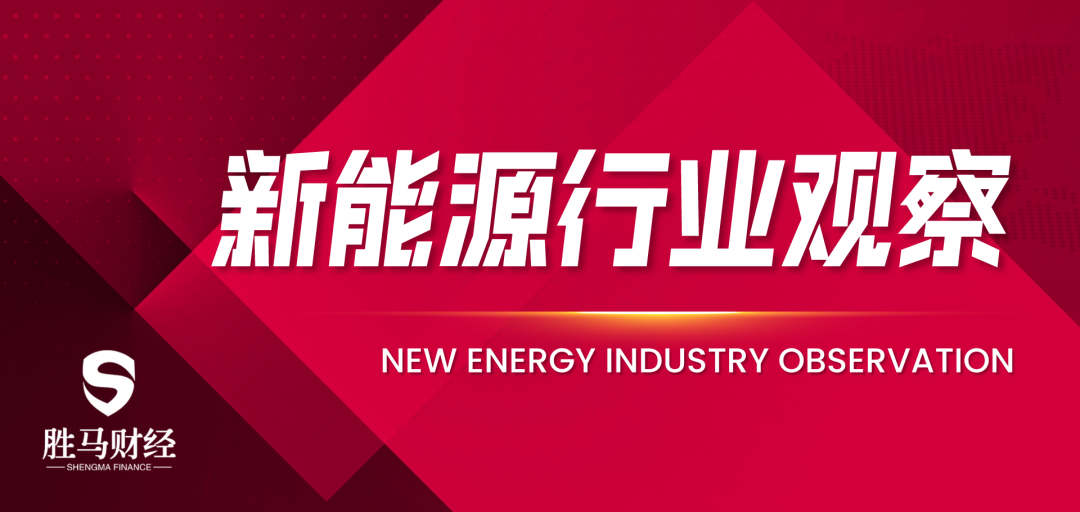Behind the Surge in Hong Kong Stock Market Fundraising by New Energy Vehicle Enterprises
![]() 04/17 2025
04/17 2025
![]() 342
342

Market Expansion and Heightened Competition
On March 4, BYD announced the placement of 129.8 million new shares at HK$335 per share, raising HK$43.509 billion. This not only set a new refinancing record for the Hong Kong auto sector but also became the largest equity financing case in the global auto industry since 2015.
On March 25, Xiaomi Group announced plans to place 800 million shares at HK$53.25 each, expecting to raise approximately HK$42.5 billion (about RMB 39.7 billion) for business expansion, R&D investment, and general corporate purposes.
On March 27, NIO Group successfully raised HK$4.03 billion through a "lightning" placement, with shares traded at HK$29.46 each.
On March 31, Thalys announced plans to issue and list H shares. Although IPO details have not been disclosed, sources close to the company indicate a fundraising scale of around US$1 billion. Earlier, in February 2025, Chery Automobile formally submitted its Hong Kong stock prospectus, planning to raise about HK$15 billion.
The enthusiasm for Hong Kong stock market fundraising remained high throughout March, with both the number of IPOs and the scale of fundraising increasing compared to the same period last year. Shengma Finance observed that many of the participating enterprises are in the new energy vehicle sector. Data shows that in March alone, four auto enterprises embarked on the Hong Kong fundraising process. What signal does this clustering of new energy vehicles in Hong Kong stocks send to the industry?

Substantial Growth in Hong Kong Stock Fundraising
The intensified fundraising by new energy vehicle enterprises in Hong Kong is closely linked to the city's favorable financing environment. Shengma Finance noted that in the first quarter of 2025, 15 enterprises went public on the Hong Kong stock IPO market, raising HK$18.2 billion—an increase of over 270% compared to the same period last year. This set a new high since 2021 and ranked fourth globally in terms of fundraising, catching up with the New York Stock Exchange and Tokyo Stock Exchange.
It's worth mentioning that in the first quarter of 2025, 51 new listing applications were added to Hong Kong stocks, 11 of which were A-share listed companies, accounting for nearly a quarter. In contrast, 27 companies went public on the A-share market in the first quarter, raising a total of RMB 16.58 billion. While the number of new listings in Hong Kong stocks is relatively smaller, the scale of fundraising is significantly larger.
For new energy vehicle enterprises, which generally have substantial capital demands, the aforementioned fundraising scales are all above RMB 10 billion. Therefore, the Hong Kong stock market is a more suitable choice. Additionally, Hong Kong stock regulations are less stringent. For instance, unlike A-shares' strict profitability requirements, Hong Kong stocks allow unprofitable enterprises to list through specific rules.
Furthermore, in recent years, the Hong Kong Stock Exchange has optimized the listing process, shortening the approval cycle for A+H shares to 30 working days and lowering the threshold for the minimum number of H shares. From a financing perspective, A-share refinancing involves processes such as board of directors' pre-planning, shareholders' general meeting review, and CSRC review, which takes an average of 9 months. In contrast, the issuance of additional shares in Hong Kong stocks typically adopts the "lightning placement" model; BYD's placement was completed within 72 hours from initiation. This efficiency is crucial for auto enterprises that need to quickly respond to market changes—NIO's placement was even completed on the same day of the announcement, attracting many new energy vehicle enterprises in urgent need of funding.
Data shows that since the "926 Policy" (Note: On September 26, 2024, the Political Bureau of the CPC Central Committee held a meeting emphasizing economic stimulus policies), Hong Kong stocks have risen from around 22,000 points to a high of nearly 24,771 points in mid-March 2025. Industry institutions believe that the general environment in March was indeed conducive to Hong Kong stock companies conducting placements and other refinancing activities.

Capital Demand Remains Substantial
From a financial standpoint, these listed auto enterprises have varying degrees of capital demand, with NIO being the most urgent. NIO's 2024 financial report revealed a revenue of RMB 65.732 billion, an increase of 18.2% year-on-year, but a net loss exceeding RMB 22.4 billion, an 8.1% year-on-year increase. Although the company's cash reserves are as high as RMB 41.9 billion, they can only sustain the company's capital needs for two years at the current rate of loss. Additionally, the company has a current liability of RMB 62.3 billion, highlighting its financial pressure.
Thalys, which is rushing to list on the Hong Kong stock market this year, achieved a historic breakthrough with a revenue of RMB 145.176 billion and a net profit of RMB 5.946 billion, becoming the fourth profitable new energy vehicle enterprise. However, as of the end of 2024, the company's asset-liability ratio reached 87.38%. While the company's debt was less than RMB 2 billion and its monetary funds reached RMB 45.955 billion, its notes payable and accounts payable amounted to RMB 68.451 billion, indicating considerable pressure.
For BYD and Xiaomi, however, they have relatively ample capital. According to the latest financial data, as of the end of the third quarter of 2024, BYD's monetary funds and trading financial assets totaled RMB 91.734 billion, including RMB 66.319 billion in monetary funds and RMB 25.415 billion in trading financial assets. As of the end of 2024, Xiaomi Group's total cash reserves were RMB 175.1 billion—possibly one of the largest cash reserves among domestic new energy vehicle enterprises.
It's evident that regardless of whether auto enterprises have abundant or scarce capital, they all exhibit a strong desire for funds. This is because most new energy vehicle enterprises have begun planning to expand their overseas markets.

Expanding Overseas and Enhancing Reserves
For example, BYD stated that the company plans to accelerate the construction of overseas factories in Thailand, Hungary, Brazil, etc., and reduce supply chain costs by enhancing local production capacity. Simultaneously, BYD will increase channel layout and brand promotion efforts in overseas markets to fully achieve its overseas sales targets in 2025. Data shows that BYD's overseas sales of new energy passenger vehicles in February reached 67,025 units, an increase of 187.8% year-on-year, setting a new record high.
Chery plans to raise RMB 35 billion through its Hong Kong IPO for the construction of factories in Thailand and Malaysia and the development of the European market. Thalys also stated that the issuance and listing of H shares are to further promote its global strategic layout, build an international capital operation platform, and improve its comprehensive competitiveness. The funds raised through H shares will be used for new energy vehicle technology research and development, overseas market expansion, and supply chain optimization.
Xiaomi's pace is slightly slower. At the Mobile World Congress 2025 (MWC 2025) in March, Lu Weibing, Xiaomi Group's partner and president, officially announced Xiaomi's plan to expand into overseas markets. He stated that Xiaomi's goal is to enter the global market in 2027.
Recently, Xiaomi Automobile also announced the recruitment of several automobile-related positions in Germany, including senior managers, operations, and vehicle/chassis engineers, vigorously attracting local automotive talents to promote localization. It's clear that Xiaomi's overseas actions will further increase this year and next.
Overall, the window for overseas markets has opened. Whether it's latecomers like Xiaomi and Thalys or established players like BYD, they will invest heavily in factory construction and overseas layout in the future. For them, although they have substantial cash reserves in China, investing and expanding overseas involves complex procedures and lengthy processes for capital outflows. Overseas factory construction and operation require significant foreign exchange reserves such as euros and dollars. Therefore, fundraising in Hong Kong stocks provides a suitable channel.
Shengma Finance noted that in 2024, net southbound capital inflows into the Hong Kong stock market exceeded HK$300 billion, with international investors accounting for over 60%. Under such a capital structure, enterprises can not only directly obtain foreign currency funds such as US dollars and euros through Hong Kong stock IPOs but also avoid the impact of exchange rate fluctuations on overseas investments.

Intensified Industry Knockout Competition
The share placements by multiple new energy vehicle companies also indicate that auto enterprises require stronger financial support in various aspects such as R&D investment and market expansion.
A fundraising professional told Shengma Finance that auto enterprises, including BYD and Xiaomi Group, are currently in a period of intense industry competition. This year is a "make-or-break" year for Chinese auto enterprises. Whoever can secure more funding has more chances to survive.
As the new energy vehicle segment enters its second half, the industry knockout competition has already begun. Electrification and intelligence not only require substantial R&D investments but also necessitate enterprises to reconstruct their supply chains, production processes, and business models. For auto enterprises, fundraising on a scale of tens of billions is just the beginning, and continuous investment will be needed in the future to cope with technological iteration and market changes.
Shengma Finance observed that the fundraising purposes of the aforementioned auto enterprises all mentioned the need for R&D. While they didn't elaborate, several auto enterprises currently dominate in different sectors: NIO heavily bets on the battery swapping model, Xiaomi focuses on intelligent driving, and BYD gambles on solid-state batteries. As the industry's technological route is still unclear, no one dares to lag behind in R&D investment.
It's evident that this wave of large-scale fundraising by new energy vehicle enterprises can allow those who obtain funds to navigate the short term more comfortably and take bigger strides. However, with the mindset of "you have it, I need it" and "cannot fall behind," competition among auto enterprises will also intensify, and the knockout competition in the new energy vehicle industry is bound to further escalate.









